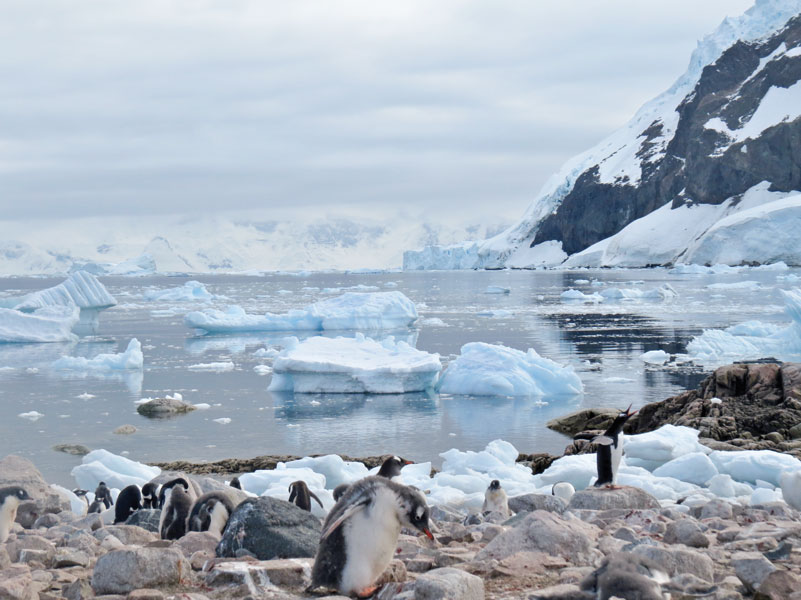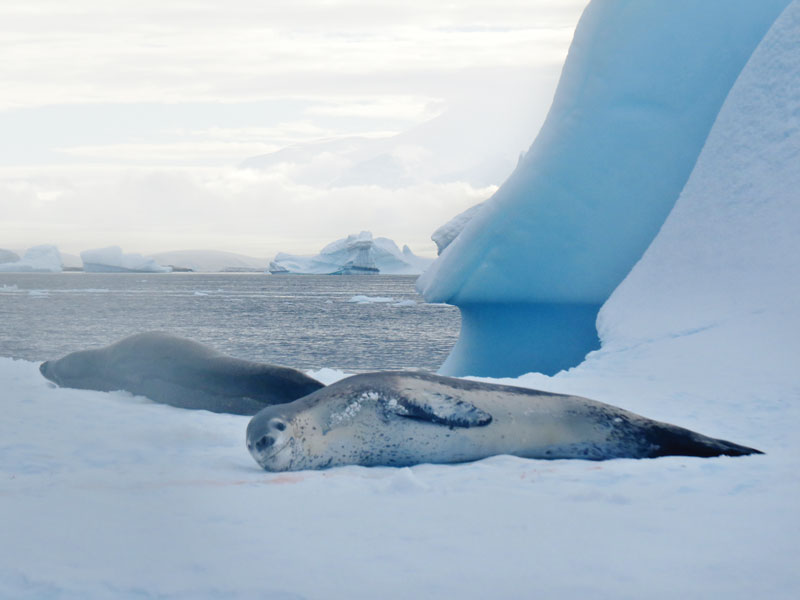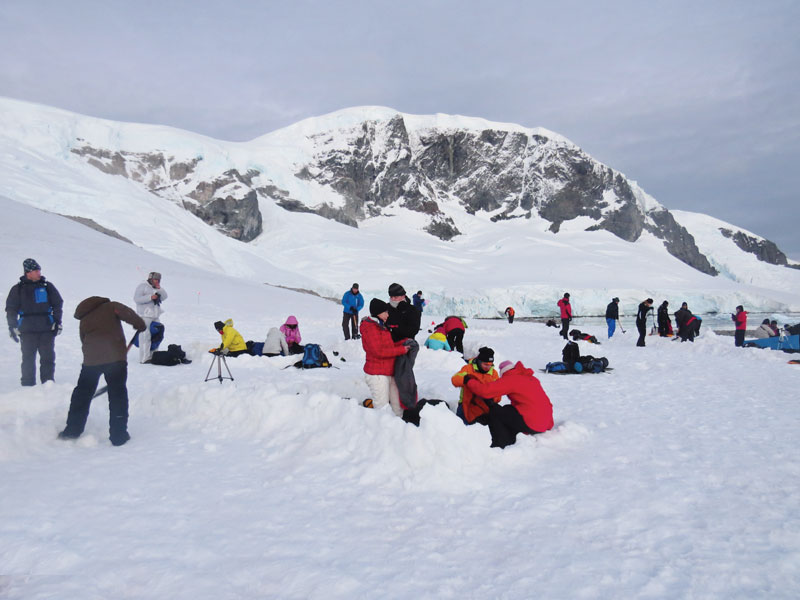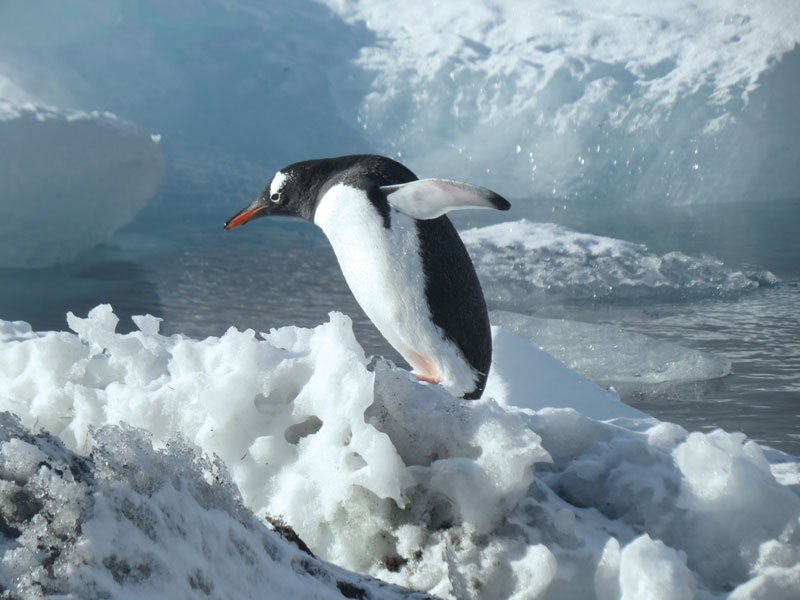In 2013, I got the opportunity to travel to Antarctica as a member of the International Antarctic Expedition team led by Robert Swan, the first person to walk to both the poles. Although I have been a passionate green activist with over a decade of experience implementing grassroots-based conservation initiatives with Green Guard Nature Organisation, I consider myself fortunate to be selected for the expedition, being based in the nondescript mofussil township of Nagaon, Assam. I was among an international team of corporate, academic and environmental leaders from 28 countries chosen to gain firsthand experience of climate change impacts on the fragile Antarctic ecosystems.

So there I was, at the southernmost city in the world. Famous as ‘Fin Del Mundo,’ or ‘End of the world,’ Ushuaia is a fascinating city on the banks of the Beagle Channel that is the gateway to the Antarctic. The acclimatisation period of two days included a gruelling hike to the top of the Martial Glacier that tested the physical and mental preparedness of the team. I was grateful that years of being physically active paid off.

Into the Last Great Wilderness
We sailed down the Beagle Channel on the majestic Sea Spirit, passing Cape Horn at the tip of South America, and then onto the turbulent Drake Passage. Seasickness made it impossible to think or act cohesively as wave after high wave crashed into the hull. For two days, we did not encounter another ship as we sailed across arguably the roughest seas on the globe.
It was a great relief to sail into the placid waters of the Southern Ocean and very soon all our woes were behind us, as we spotted the first iceberg. I did not mind the plummeting temperatures, worsened by the wind chill factor, as we made our way through a sea of icebergs towards the frozen continent. It was magical and beyond anything I had ever imagined … I was enthralled.
It has no native human population, no permanent residents, no official language, no capital and no currency.
The Frozen Continent
Our first shore landing on Antarctica was at Trinity Island, a little paradise by the picturesque Mikkelsen Harbour. Gentoo Penguins ran in to welcome us while Antarctic Fur Seals and Weddell Seals frolicked five metres away, oblivious to our presence. That reflects how pristine the Antarctic environment is, totally in the natural order of things and undisturbed by humanity.
Antarctica is a magical place and to experience its sights, sounds and smells is beyond imagination. One has to be there to comprehend its magic. It is the coldest, windiest, driest, highest and most remote place on earth and holds 90 per cent of the world’s ice and 70 per cent of its fresh water. It has no native human population, no permanent residents, no official language, no capital and no currency. In spite of the extreme weather conditions, the coastal areas and surrounding seas of Antarctica are rich in spectacular wildlife, which is why it is known as the last great wilderness.
Every day brought a new experience and these memories will live forever, and I believe I am speaking for all my fellow Antarctic travellers. I loved camping under the open skies at Ronge, where we spent a sleepless night in dugouts fortified with plastered snow to keep out the wind, watching the Southern Lights. At Portal Point, we drifted in brash ice with engines switched off, while Humpback whales cavorted at a short distance. Another memorable day was spent hiking over a glacier covered with huge crevasses at a place called Brown Bluff.
I will never forget the shockingly cold water during the polar plunge, when some of us opted to jump into the icy Antarctic waters in the middle of a mild snow storm. Easily, the craziest thing I have ever done. Another abiding memory is of the breathtakingly beautiful Lemaire Channel, one of the most photographed landscapes on earth. Then there was Neko Harbour, where we witnessed the calving of a glacier and the birth of an iceberg before our eyes.

It was a great privilege to visit the Russian Bellingshausen base on King George Island, also the site of the inspirational 2041 run ‘E-Base,’ the first education station and the only base in Antarctica run entirely on renewable energy. In 2008, Robert Swan had become the only private person in the world to have a base at Antarctica.
Rotarian Robert Swan
During the Flag ceremony, Robert Swan revealed to me that he was also a Rotarian. “Rotarians are good people,” he said, while we were holding up the flag of the Rotary Club of Nagaon for the official photo sessions. “I have been a member of the Rotary Club of Sydney,” he added.
The greatest threat to the planet is the belief that someone else will save it.
We were summoned to the top deck of the Sea Spirit at 7 a m for the Iceberg Ceremony. We saw the large tabular icebergs that had floated north from the collapsed Larsen B ice shelf 11 years earlier. Said Swan, “Back in 2002, most people did not believe in climate change. When it started to collapse,” he said, pointing across to the iceberg, “scientists said it will take a long time to collapse, but after the cracks were first noticed, it went very fast and collapsed in less than four weeks. So throughout the day you will see these icebergs where they should not be. Now that you have seen the impact of climate change already happening here, you must help spread the word and ensure that world leaders take decisive action before it is too late.”
The Antarctic ice sheets represent a volume of 32 million cubic km and if these melt, they would cause sea levels to rise by over 200 feet! Even partial melting of these great ancient ice sheets could inundate large parts of low lying countries. In the Arctic, the Greenland ice sheet is in danger of being impacted even faster by global warming. According to climate projections, just one metre rise is sea water levels will submerge 17,000 sq km of land in Bangladesh, affecting 15 million people. In such a scenario, no army or boundary wall could effectively stop the influx of climate refugees into neighbouring areas in India, leading to disastrous consequences.

Climate change has already affected the people of this region; seasons have changed, rivers have changed course and people have lost their land and livelihoods. Assam has seen a long drawn agitation against infiltration from neighbouring countries; these illegal immigrants are perhaps some of the earliest climate refugees in the world. We have to take charge of our destiny and prevent this region from disappearing into the pages of history or future generations will never forgive us for having failed to protect our homeland. As Robert Swan says, ‘The greatest threat to the planet is the belief that someone else will save it.’
(The author is a member of Rotary Club of Nagaon, D 3240.)
Pictures by Rituraj Phukan






